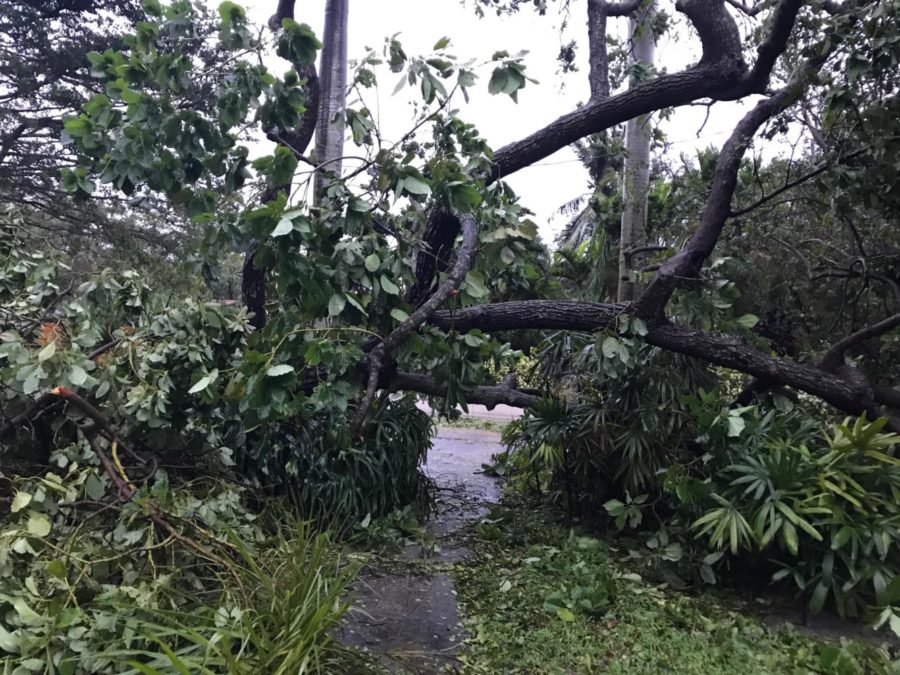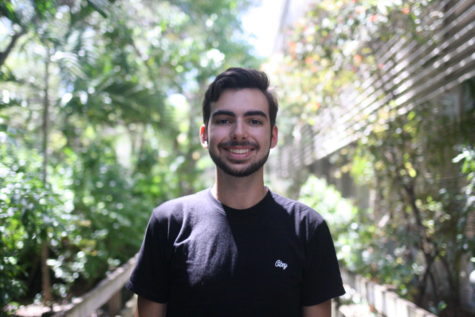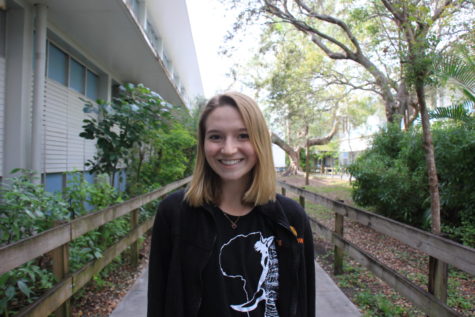After Irma: Power Struggle
October 13, 2017
As Irma neared and models shifted west, Miami-Dade County breathed a sigh of relief at the idea that it would be spared the worst of the storm. But, despite Dade receiving only category 1 force winds when we were expecting category 4 force winds, many residents of the county sustained significant damage to their homes and lost power for well over a week, especially in the suburbs south of Downtown Miami like Pinecrest, Palmetto Bay and Coral Gables. In the aftermath of Irma, while the dead foliage of fallen branches still lines the streets of our neighborhoods, many residents have begun to ask themselves critical questions. Were we prepared for Irma? If not, who is to blame?
Dade residents all prepared for the storm the traditional way; they put up shutters, moved patio furniture inside, stocked up on canned food and charged their devices. Locals wiped out grocery stores of bottled water and other necessities. Many homes also upgraded to hurricane glass or impact windows and built stronger homes in response to storms like Andrew in 1992 and Wilma in 2005, which strengthened building codes.
However, even after all the typical preparation, people had to brace themselves for the power outages that ensued as the storm began. Some, like senior and Pinecrest resident Audrey Paz, even lost their power before the storm hit on Saturday. Paz claims her house lost power on the Friday before Irma made impact. However, to her and others in her neighborhood, this is a regular occurrence.
“Whenever it gets stormy here, we always lose power right away,” Paz said. “For everyone in the neighborhood, that’s just how it is. We lose power constantly.” Paz says the proliferance of trees makes her neighborhood prone to power outages. She echoes the frustration at foliage many residents of Pinecrest felt during and after the storm as tree branches landed on and knocked down power lines.
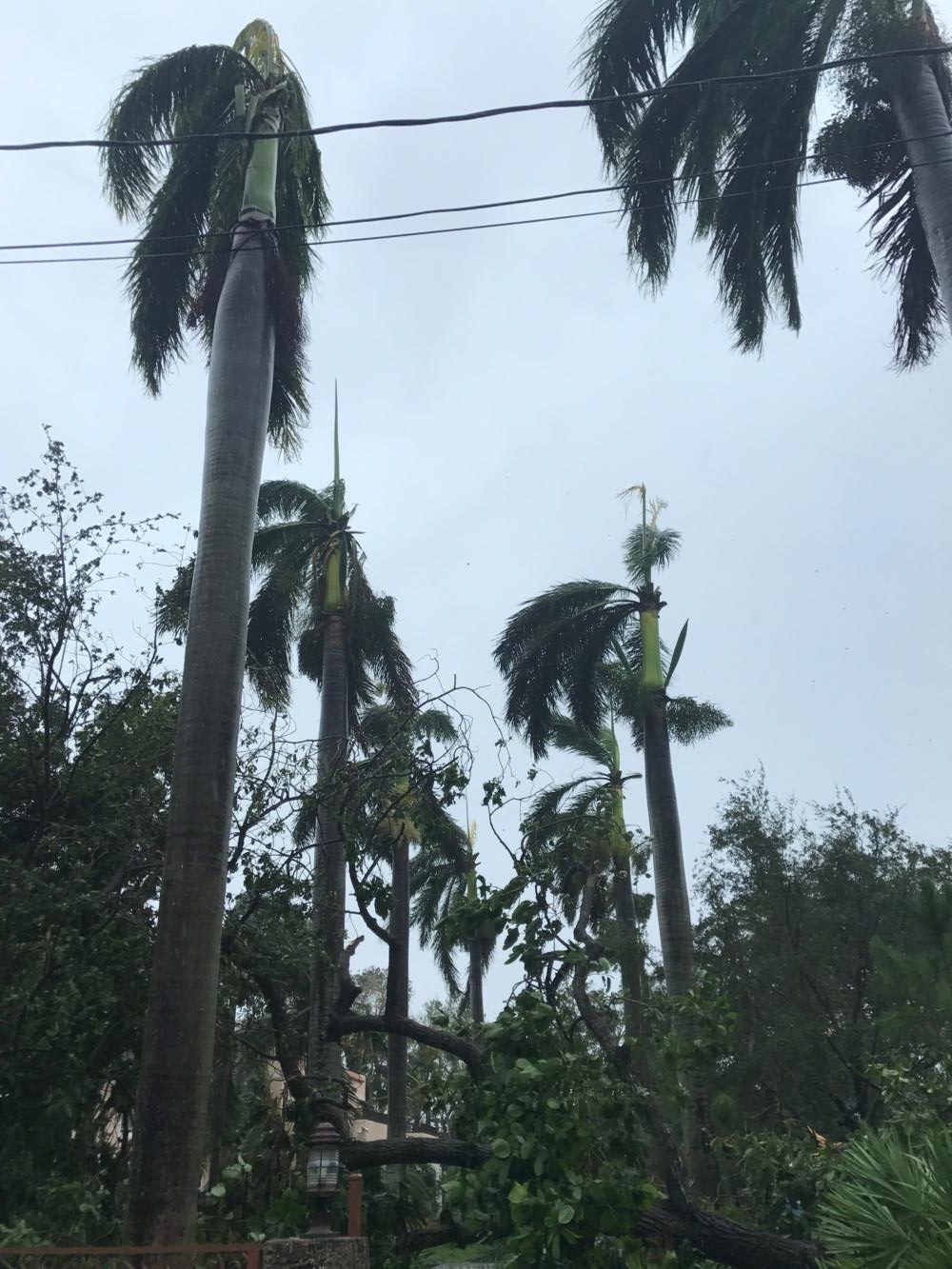 Pinecrest is not unique in this regard. The village, as well as Palmetto Bay and Coral Gables, has been deemed a “Tree City U.S.A.” by the Arbor Day Foundation and places its tree canopy in high regard.
Pinecrest is not unique in this regard. The village, as well as Palmetto Bay and Coral Gables, has been deemed a “Tree City U.S.A.” by the Arbor Day Foundation and places its tree canopy in high regard.
“We pride ourselves on a wonderful tree canopy,” Pinecrest Mayor Joseph Corradino said. Municipalities like Pinecrest that are trying to establish a canopy have strict rules regarding how residents maintain the trees on their property that ensure little to no canopy loss. In Pinecrest’s Rules for Cutting, Pruning, and Removing Trees, the Village establishes a detailed process for removing a tree that requires a property owner to file for a permit to cut down the tree and replace the canopy coverage lost by planting trees that will cover a wider area.
The aesthetic beauty of our neighborhoods ranks high in importance to the residents. But how can municipalities reconcile the promotion of a canopy with guaranteeing the security of our power lines?
“It [the canopy] is important,” Paz said. “But at the same time, we really need to be careful doing that because of the amount of hurricanes we get.”
The options the neighborhoods have for alternative ways of directing power to its residents are few. Florida Power and Light, the state-approved monopoly on power in Florida, has already begun one of these options in the suburbs: the hardening program. In this program, FPL replaces older wooden power poles with concrete poles that are less likely to collapse during a storm.
However, according to Pinecrest Village Council Meeting minutes from May 5, 2015, residents opposed the installation of these new poles because of their size and expressed concern regarding further installation in the future. According to Corradino, the hardening program has covered “a decent percentage [of the Village] but [is] certainly not a complete project.”
Another option that has come up recently is burying the power lines underground. Residents seem to see this option as favorable because it protects lines from tree interference and allows them to maintain the canopy without sacrificing security. However, the proposal does come with significant downsides. When lines are buried they are more susceptible to damage from flooding and when they do experience a disruption (although they do much less frequently than above-ground lines), the damage is harder to locate and restore, thereby delaying power restoration to houses on those lines.
Pinecrest is still looking into line burial as an option, but has not made much progress on the matter over the past few years.
“We’ve been fighting with FPL for close to a decade to make undergrounding an option as it would seem practical in a community like ours that does have so many large trees and that’s a source of pride for us,” Corradino said. “But it’s just not an option.”
According to FPL, line burial costs roughly $1 million for every mile of line buried. Because of these high costs that would fall to the residents to pay, the option is not available to many neighborhoods, though buried lines exist in various areas in Miami.
Solar panels have been the most controversial option due to FPL’s historic stance against their installation in the Sunshine State. Under current FPL regulations, residents with solar panels cannot disconnect them from the FPL grid. During a power outage, residents with solar panels are also not allowed to run their panels due to dangerous backfeed along the lines that could harm workers restoring lines. Because FPL does not allow disconnection from the grid, which would eliminate the threat of backfeed, solar panels are rendered effectively useless during power outages.
FPL also attempted to rally the public around Amendment 1, a proposed amendment to the Florida Constitution that used misleading language to deceive voters into thinking the amendment would promote solar expansion when it would really allow FPL to raise fees against solar panel usage and limit expansion. The proposal was killed when it did not receive the required 60 percent vote when it was on the ballot in November 2016.
Throughout the aftermath of Irma, FPL received more backlash than usual. This backlash was usually not directed at the individual workers. In fact, most residents seem to be appreciative of the out-of-state workers that came to help with the recovery effort.
“I can’t complain because obviously there were so many homes without power,” Paz said. “They helped everyone, I think everybody got their power back at a decent time. It’s hard to imagine only a couple workers fixing millions of homes so I think they did well.”
However, many did criticize the company at the corporate level for inadequate preparation, mostly regarding the delayed mobilization of workers into areas of South Florida.
The city of Coral Gables is in the process of filing a lawsuit against FPL. They claim that the company was not prepared for the storm and that they were delayed in removing fallen trees from roads that had power lines tangled in them, which only FPL workers are allowed to remove. Coral Gables is also known for its large canopy of trees and the city saw many fallen trees throughout their neighborhood.
Other neighborhoods have expressed their dissatisfaction with FPL’s response.
“We were a little upset to see that the power trucks were not in the neighborhood early on,” Corradino said.
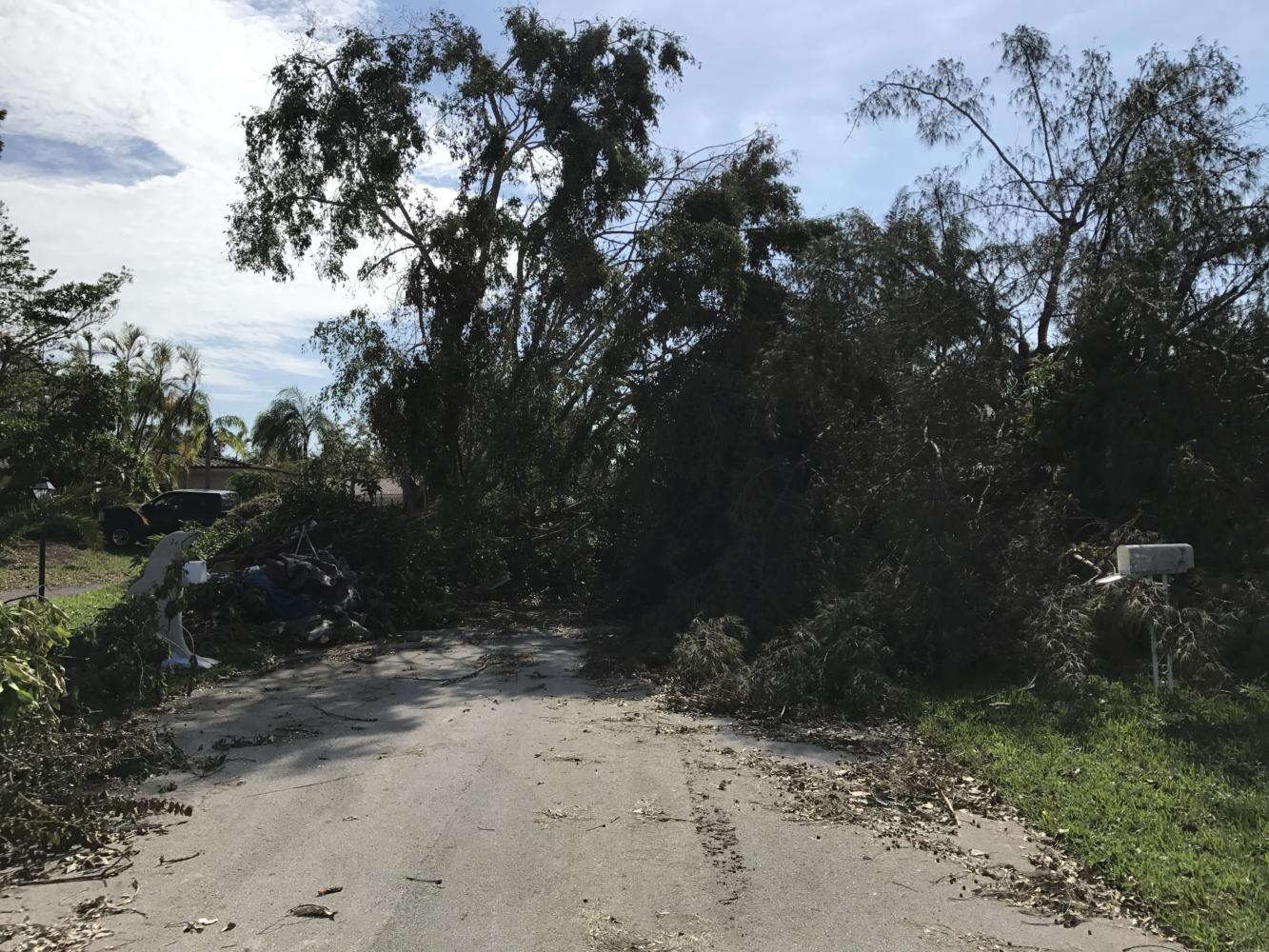 Despite this sentiment, Pinecrest has not committed to joining the lawsuit with Coral Gables or filing their own lawsuit.
Despite this sentiment, Pinecrest has not committed to joining the lawsuit with Coral Gables or filing their own lawsuit.
“We’re keeping all of our legal options open at this point in time,” Corradino said. “We need better relationships with FPL and we’ll help them wherever they need help.”
However, some residents are still angry at FPL’s response to the storm and called upon their local municipal governments to fight against the company and demand a better response. Because FPL has controls a large majority of the power supply in Florida, residents believe the company should be more responsible and prepared in the event of major storms like Irma. In their dissatisfaction, residents questioned why FPL is allowed to control such a large portion of the industry.
“There’s a concept in economics called economy of scale, which is that there are some things that are so large that if you have more than one company providing competitive service, the industry can get confused,” AP United States Government and politics teacher Mr. Spiegelman said. “[the government] provides sort of a regulated monopoly, and FPL is not the only [power company], there are power companies in other parts of the state, but FPL is the biggest. They can provide a continuity of service.”
In the immediate aftermath of the storm, Palmetto Bay residents urged Mayor Eugene Flinn to negotiate a faster response with FPL on their behalf and keep them in the loop. Flinn’s blog on Blogspot, Eugene Flinn – South Dade Updates, advertises itself as, “My best method for keeping everyone up to date on important matters affecting our community.” But, with loss of power, internet and cell service, many residents were unable to get online and search for his blog, preventing them from receiving any critical updates.
Some residents did not take this well.
“He was very rude to one of my social media posts. He asked his fellow Palmetto Bay residents to stay informed by following his Facebook page and blog, however, no one had power or phone signal,” Palmetto Bay resident Melissa Cabrera said. “I found it very unprofessional for him to ask his community to seek information rather than provide a status in another forum outside of social media.”
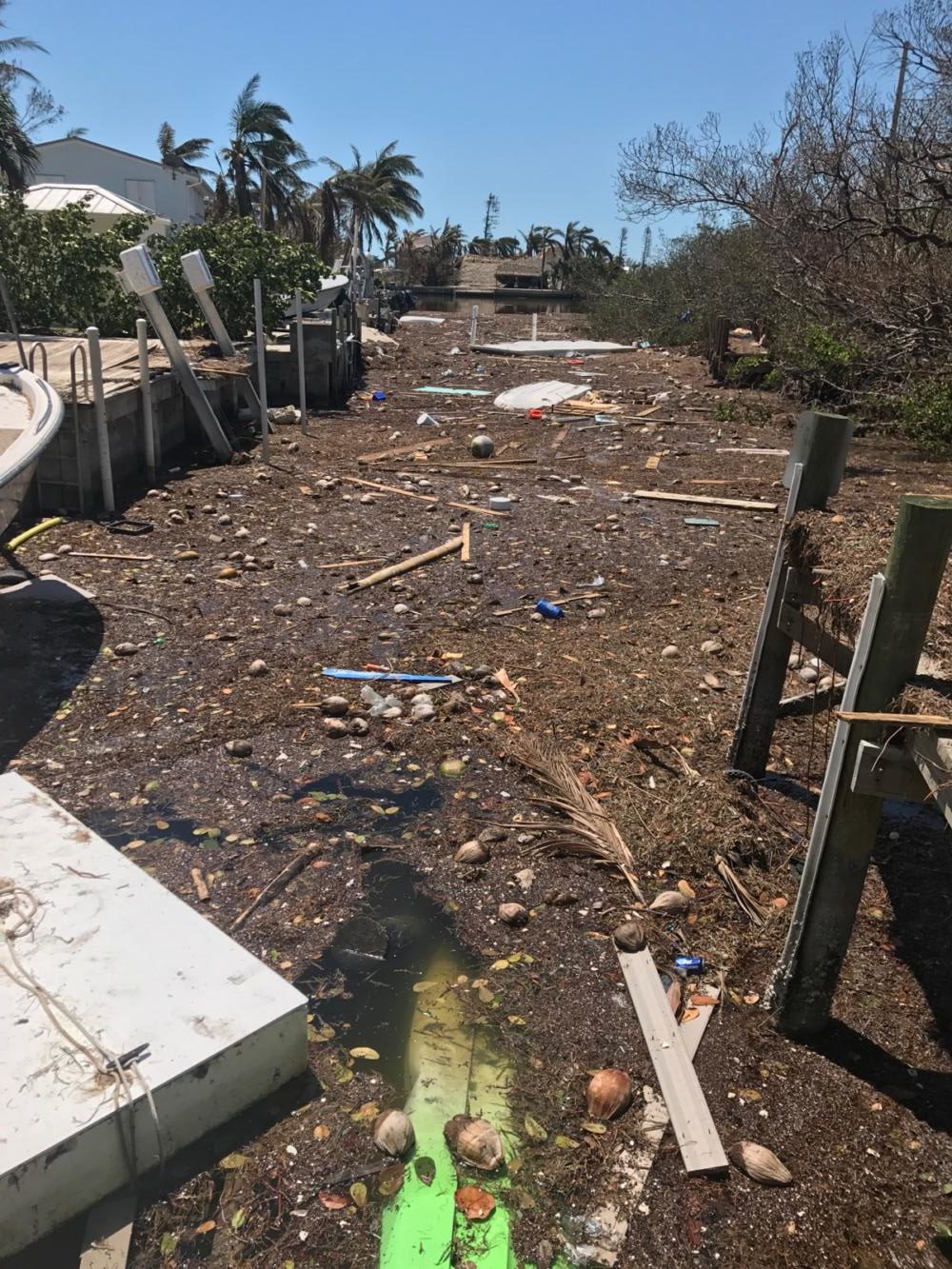 Cabrera took to Facebook to express her discontent with Flinn’s after-Irma protocol. She posted a Miami Herald article that said South Dade residents will not have power back for longer than expected, and she wrote, “Nowhere in this article is he [Flinn] taking a stand for the rest of us left in the dark. I guarantee he is up and running at home!”
Cabrera took to Facebook to express her discontent with Flinn’s after-Irma protocol. She posted a Miami Herald article that said South Dade residents will not have power back for longer than expected, and she wrote, “Nowhere in this article is he [Flinn] taking a stand for the rest of us left in the dark. I guarantee he is up and running at home!”
Flinn responded, “Seriously? I am through this village ever since the storm. Follow my posts on my blog. I have stayed in town for the storm and afterwards to assist and participate in the recovery.”
Flinn later said in an interview with The Panther that, per the communications issues, he will explore alternative options, including radio.
While most of us continue to play the blame game, some believe what happened in the aftermath of Irma was a best-case-scenario, given the circumstances.
“No one is to blame for how long the power was out,” senior and Coral Gables resident Elizabeth Seckinger said. “It is the hurricane’s fault and FPL restored power as best as they could and brought people from all over the country to help.”
Granted, Irma was a storm of unprecedented size that affected nearly the entire state of Florida and stretched some resources thin. But, Miami was preparing for a direct hit from a category 3 or 4 hurricane based on the Irma models we saw about a week before the storm. If this is what category 4 preparation looks like under category 1 conditions, what will happen to our communities if a category 4 eventually does hit us? Will we be prepared?
The damage we have seen from Irma’s category one forces has been devastating in some parts of Miami. Evan Golinksi, a sophomore and Coconut Grove resident, evacuated to Atlanta with his family for the duration of the storm. When he returned, the state of his neighborhood served as a chilling reminder of what could have happened to more inland neighborhoods in a stronger storm.
“The Grove is known for its foliage, and downed trees made roads impassable and accessing power lines impossible,” Golinski said. “We had about a foot of water in our whole house and this water seeped up the walls while we were away. All our furniture, finishes, walls and floors were all ruined. You could say we suffered a total loss.”
The house requires nearly complete restoration. Stronger storms, like the category 4 storm we expected, could have pushed storm surge all the way into neighborhoods like Pinecrest, Coral Gables and Palmetto Bay and caused similar damage in these neighborhoods.
“I don’t think anybody’s prepared for a category 4 or 5 hurricane,” Corradino said.
While this may be true due to the severe nature of these storms, it does not acknowledge the fact that hurricanes of this intensity have become more frequent in recent years due to climate change. As ocean waters get warmer, hurricanes intensify. Combined with rising sea levels and increased precipitation, we can see extreme flooding as seen in Houston from Hurricane Harvey and along the coast from Jacksonville, Florida to Charleston, South Carolina from Irma.
As we have seen from Hurricane Maria’s devastating impact on Puerto Rico and other Caribbean islands, we do not want to take the risk of weathering a category 4 or 5 storm. Yet as global warming continues to contribute to stronger, more frequent storms, companies like FPL have repeatedly blocked efforts to turn to sustainable resources like solar power and pushed resources like natural gas and nuclear energy (which does not contribute to carbon dioxide emissions but does harm the environment in other forms).
On the other hand, local communities have made efforts to reduce their environmental impact. For example, Pinecrest’s Green Action Plan outlines village actions for reducing greenhouse gas emissions and managing sustainable growth. Palmetto Bay’s Guiding Principles for a Sustainable Village direct the village to increasing community and government involvement in sustainable practices.
“I would like to see our government recognize the effects that climate change has on the intensity of hurricanes to make changes to policy regarding the environment,” Golinski said. “If my house was destroyed from only a category 1 or a 2 storm, I can’t imagine what Miami would look like after a direct hit from a 4 or a 5.”



